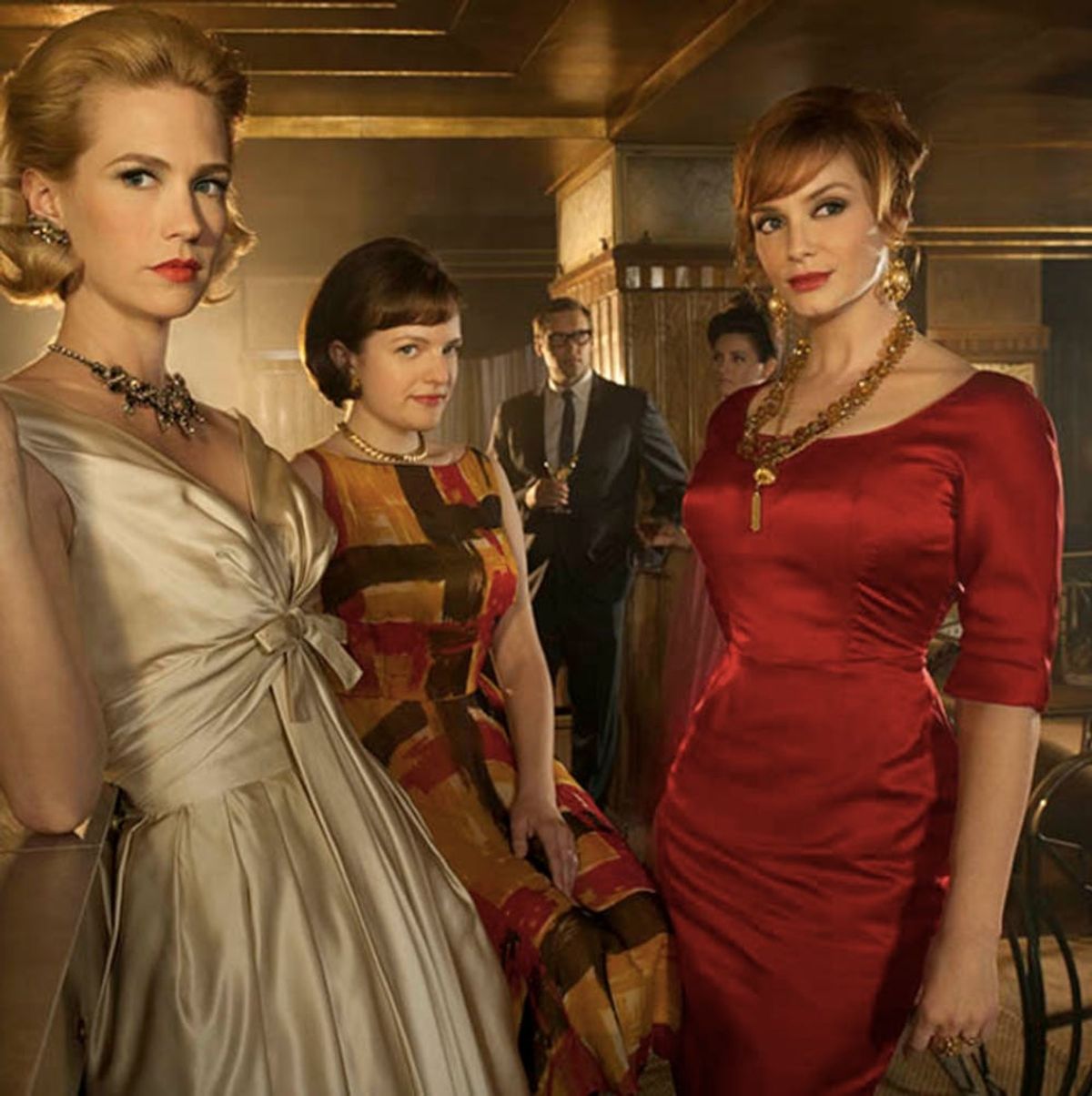On the 10th anniversary of Mad Men, a look back at how far we’ve come.
You’ll Be Shocked by How Much (and How Little) Women’s Rights Have Changed Since the Mad Men Era

It’s hard to believe, but today marks 10 years since the world was introduced to Don Draper, Peggy Olson, Joan Harris, Betty Draper, and all the rest of the characters in AMC’s Mad Men. The wildly successful drama highlighted issues that were of major social and political importance in the 1960s and early ’70s, when the show is set: from race to class and gender, Mad Men touched on it all.
Our favorite female characters had a tough road to walk in the show. Whether it was Peggy asking for fair pay at Sterling Cooper or Betty struggling alone with her mental health, Mad Men illustrated both how tough women had it then, and how far we’ve come on women’s rights issues.
In most cases, our society has actually made quite a bit of progress! But have we really come all that far since the Mad Men days? Let’s take a look back at some of the show’s most prominent women’s rights plots.
BIRTH CONTROL

Who could forget the way Peggy was condescended to and shamed by her doctor when she went to get a birth control prescription in the first season? Season one takes place in 1960 when the pill had just been approved for contraception, but it was still controversial, and it wasn’t at all unusual for women to be shamed for wanting birth control, or to have a hard time getting a prescription.
These days, the pill is just about everywhere; it’s pretty affordable, and it’s relatively easy to get. Organizations such as Planned Parenthood, which was founded in New York all the way back in 1916, have led the way in making birth control widely available to women of varying income levels around the country.
But that hardly means the story of birth control access has ended with sunshine and roses. In some states (especially the more conservative ones), huge numbers of women still face significant barriers to birth control access. Take Texas, for example. A 2016 study found that just 12 percent of Texas women faced 0 obstacles when trying to get birth control.
WORKPLACE SEXUAL HARASSMENT

Much like the real world, the fictional New York ad agency Sterling Cooper (later Sterling Cooper Draper Pryce, and later still, Sterling Cooper & Partners) was rife with sexual harassment. The two most prominent working ladies on the show, Peggy and Joan, both experience a ton of sexually charged treatment that is enough to make your blood boil over. Joan was even propositioned for sex in exchange for a better position within the firm in season five.
The prevalence of sexual harassment in the show was exhausting just to watch, and while workplace sexual harassment is no longer typically as blatant as it was “back in the day,” it is by no means eradicated. Recently, Fox News was rocked by a series of harassment allegations against several prominent men within the network. Bill O’Reilly was fired from the network in April after multiple women accused him of sexual harassment, and the now-deceased founder and former CEO of Fox Roger Ailes was forced to leave the network in July last year amid a sexual harassment scandal.
While sexual harassment at work is still common, at least now there are actually laws against it in place — in fact, it was the Civil Rights Act of 1964 that made it illegal to discriminate against employees on the basis of sex, as well as race, religion, nationality, or nationality.
ATTITUDES TOWARD MENTAL HEALTH

While it was a bit subtle in the early seasons, it’s fair to say that the character of Betty Draper struggles with some significant mental health issues. As was the case with many housewives during that time period, Betty seemed unhappy at home and depressed by her surroundings. She and Don had an emotionally and at times physically abusive relationship while they were married, and Betty also got physical with her kids as punishment.
Feminist activist and author Betty Friedan wrote in her pioneering 1963 book The Feminine Mystique about the myriad ways women’s mental health and feelings were utterly neglected in the home, which was the sphere many women were confined to in the 1950s and 1960s. In the 54 years since the book’s release, mental health professionals have begun to take women’s mental health more seriously, but there’s still a heavy stigma around depression, anxiety, and other mental health disorders.
Both depression and anxiety are more common among women than men, and women are more likely than men to be diagnosed with multiple mental illnesses. Despite the prevalence, the stigma surrounding mental health has remained steadfastly in place. As the World Health Organization explains, mental illness among women is often used to reinforce negative gender stereotypes, further disempowering them in an already sexist society.
WORKPLACE DIVERSITY

The Mad Men era was also a period of change for the rights of people of color, especially black Americans. Viewers will quickly notice that there are very few black people in the lives of the all-white starring character lineup, and it wasn’t until the beginning of season five that a black person was hired to Sterling Cooper Draper Pryce. At the start of the season, Dawn Chambers is hired as Don’s secretary.
Like sex-based discrimination at work, race-based discrimination was made illegal in 1964, but that hardly cleared things up for people of color in the workplace. Current data shows that people of color are still discriminated in hiring practices, wages, and housing, despite the fact that the Civil Rights Act has been on the books for 53 years.
While the show was named for men, it was the women of Mad Men that often stole the show, raising important questions and ensuring that nobody forgets “the good old days” really weren’t good for women and people of color. The perspective the show offered up on Sunday evenings demonstrates both how far we’ve come, and how far we have to go.
What are your thoughts on the 10th anniversary of Mad Men? Tell us on Twitter @BritandCo.
(Photos via Getty, AMC + Flickr/MyLifeinPlastic.com)


















